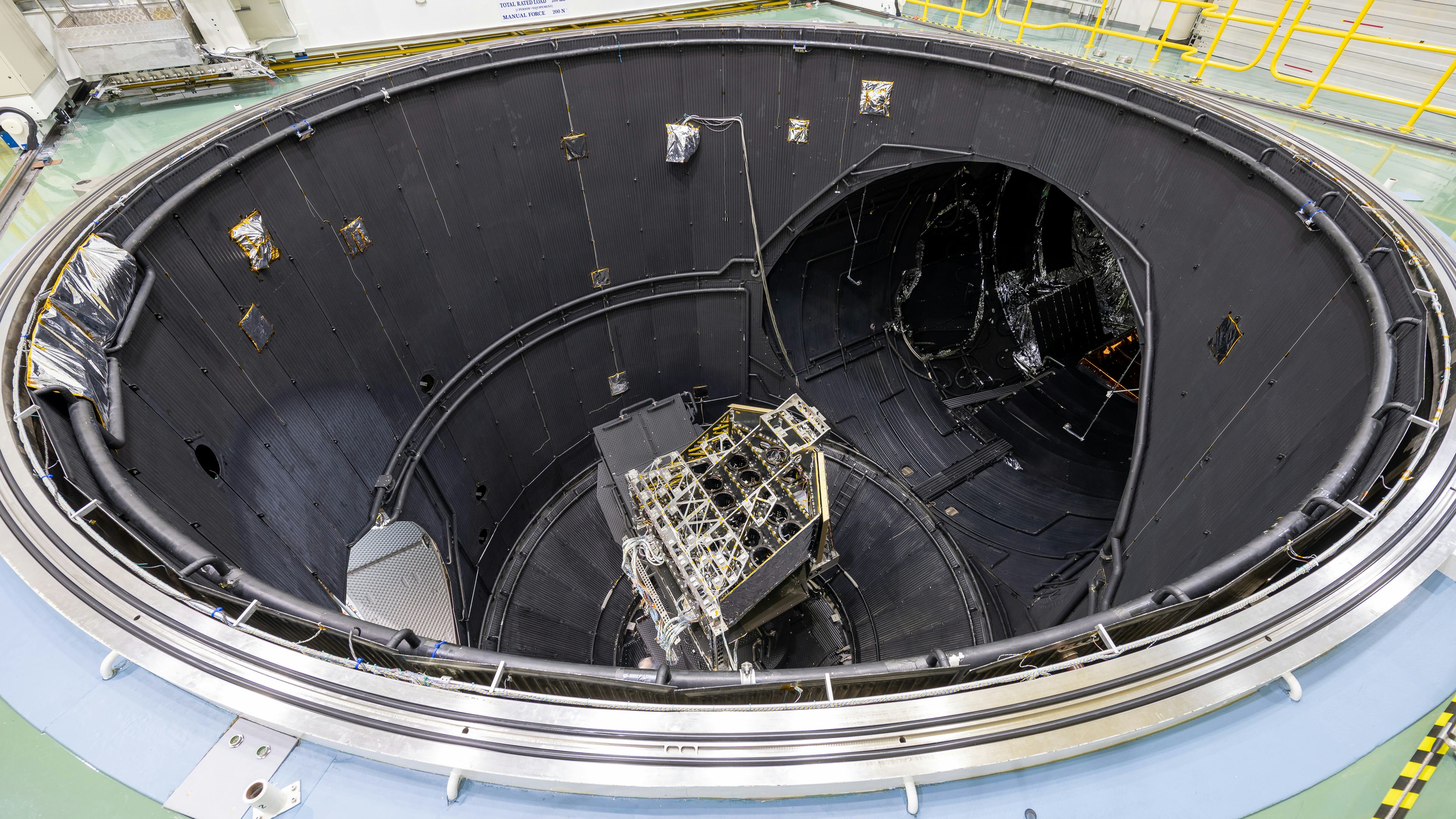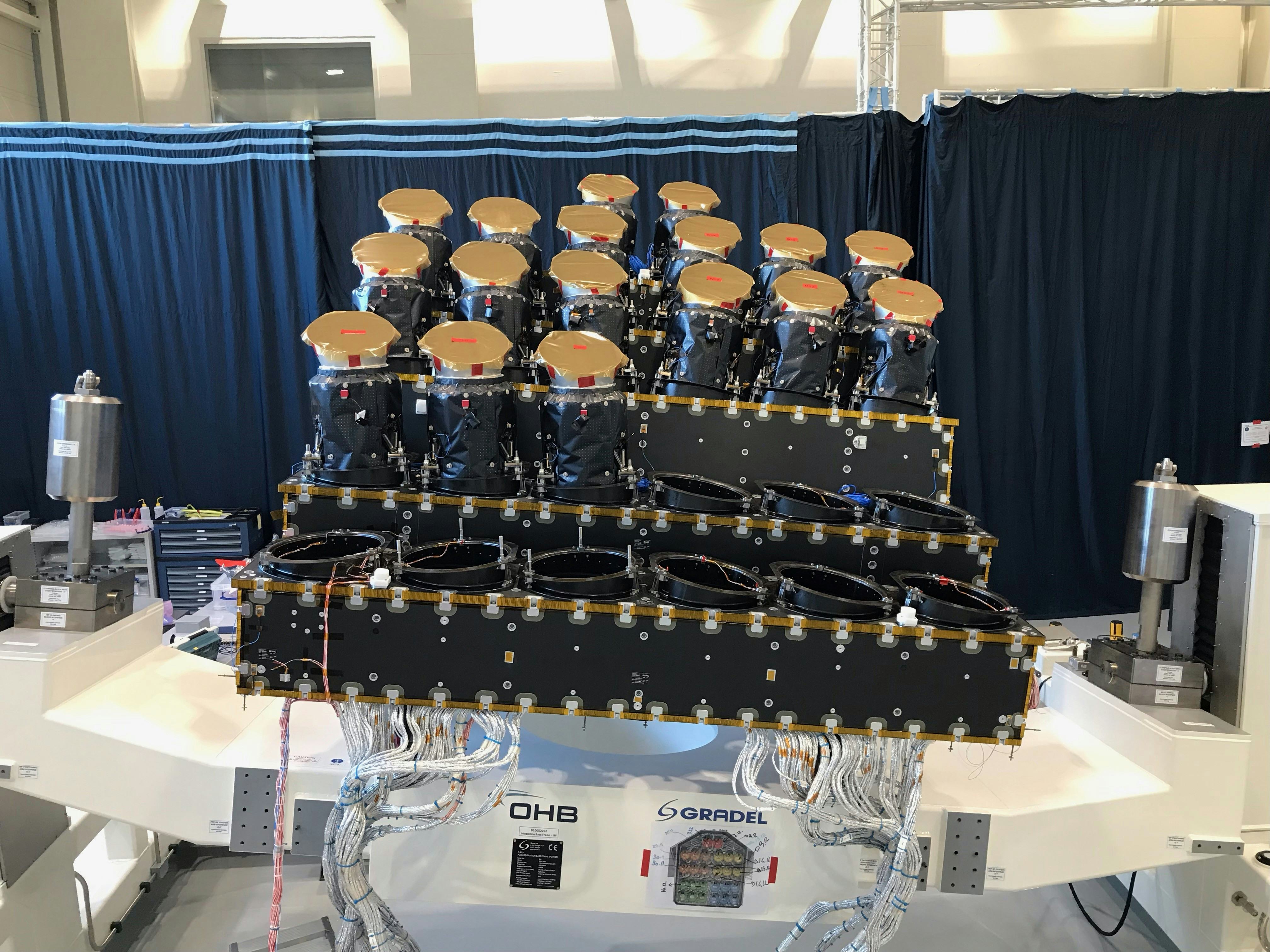
PLATO just moved a little closer to the future. The upcoming exoplanet-hunting mission under development by the European Space Agency (ESA) is named after the Greek philosopher. Like its namesake, it will look for the physical laws underlying planetary motions.
ESA announced on January 14 that PLATO had passed a critical milestone review of the PLATO spacecraft and payload, allowing development on the telescope exoplanet-hunting observatory to move forward with a launch expected sometime in 2026.
When it launches, PLATO will join a host of other exoplanet-hunting and characterizing missions, including NASA’s James Webb Space Telescope. But PLATO has a specific role to play: finding and characterizing rocky, Earth-like planets in the habitable zones around Sun-like stars, worlds that hold the greatest chance of sustaining life that’s anything like what we know it.
What is PLATO?
PLATO is an ESA space telescope mission under development by ESA to hunt for exoplanets around distant stars. It is one of four planned or launched ESA missions to focus in whole or in part on exoplanets.
ESA’s CHaracterising ExOPlanets Satellite (CHEOPS) was launched in 2019 and is currently hunting Earth to Neptune-sized exoplanets from a solar-synchronous orbit around Earth.
NASA’s James Webb Space Telescope, on which ESA has been a major partner, will conduct deep studies of exoplanets once it becomes operational over the summer, including targets first characterized by CHEOPS. Webb will operate about 1 million miles from Earth in orbit around Lagrangian Point 2 (L2).
ESA’s Atmospheric Remote-sensing Infrared Exoplanet Large-survey (ARIEL) will launch in 2028 and will conduct a survey of the chemical constituents of distant exoplanets from its orbit around L2.

What does PLATO stand for?
PLATO stands for PLAnetary Transits and Oscillations, referring to PLATO’s use of the transit method for detecting exoplanets.
Distant exoplanets are incredibly dim compared with their host stars, making them extremely difficult to impossible to view directly. The transit method uses changes in the star’s light to detect orbiting exoplanets.
By closely watching a star for dips in its brightness associated with an exoplanet passing between the star and the telescope — a transit — astronomers can not only detect the existence of an exoplanet but gauge its size by how much it dims the star’s light. And by watching for a second transit, astronomers can measure the exoplanet's orbital period.
What is the primary goal of PLATO?
ESA designed PLATO to discover and characterize rocky, Earth-like exoplanets in the habitable zones of Sun-like stars and determine whether those exoplanets are habitable. To accomplish that primary goal, PLATO will determine the mass and radius of exoplanets and study those planets’ stars to better understand the evolution of other solar systems with potentially habitable worlds.
What type of telescope is PLATO?
While the Hubble Space Telescope has one big primary mirror, and the James Webb Space Telescope has an even bigger primary mirror made up of 18 segments, PLATO will consist of 26 separate telescopes, each with its own camera.

The Plato telescopes are also refractor telescopes, using a series of lenses to collect and focus light rather than a set of mirrors like Webb and Hubble.
When is the PLATO mission launch date?
PLATO is currently scheduled to launch near the end of 2026, although a lot of further testing and development remains before the mission ever gets off the ground. For example, another critical review, this time of the spacecraft’s design, will be a must-pass deal for PLATO in 2023.
But recent history suggests it pays to take your time when deploying sophisticated scientific instruments to deep space. While admittedly much larger than PLATO, the long-awaited James Webb Space Telescope was repeatedly delayed over its years of development and leading up to its launch on December 25, 2021. But as some scientists who worked on Webb for decades noted, all of that testing and caution paid off, with the Webb sailing smoothly thus far to orbit around L2.
How will PLATO differ from TESS?
PLATO and NASA’s Transiting Exoplanet Survey Satellite (TESS) share some mission similarities but are designed for different purposes.
Launched in 2018, TESS, like PLATO, uses the transit method to detect exoplanets. But TESS was designed to make full-sky surveys of bright, nearby stars in its hunt for exoplanets, which precludes it from spending enough time staring at a few patches of the sky long enough to detect Earth-sized exoplanets around Sun-like stars.
How will PLATO work with ARIEL?
By the time ARIEL is in space and operational, PLATO may already have targets for the exoplanet chemistry mission to investigate. PLATO may also provide targets for Webb, which will be a powerful instrument for studying exoplanet atmosphere chemistry using its infrared spectroscopy instruments.
But Webb is also a multi-purpose tool that will be used to study distant galaxies, dark matter, and even planets within our own Solar System. With two space missions dedicated to Earth-like exoplanets and their chemistries, ESA will be able to spend more time studying distant worlds that may prove to be much like our own.







